Essential Design Features for Chicken Coops: What Every Beginner Needs to Know
- May 29, 2024
- 0 comment
A chicken coop’s design and functionality greatly influence the success of raising chickens. From constructing several coops, I’ve identified eight essential features that are crucial, whether you’re building your own coop or buying one. Here’s what every chicken keeper needs to know to ensure their coop meets all necessary standards for safety, comfort, and efficiency.
1. Predator Protection

One critical aspect of chicken coop design is ensuring robust protection against predators. It’s not uncommon for entire flocks to be lost due to inadequate security. Key measures include securing all potential entry points, using hardware cloth instead of chicken wire (as predators can easily breach chicken wire), and considering the protection from both ground and aerial threats. For those not ready to invest in a fully covered run, avian netting provides an economical alternative to protect against aerial predators without obstructing light.
2. Protection from the Elements

Depending on your climate, protection from the elements could range from providing shade and precipitation shelter in hot climates to insulating against wind, rain, and extreme temperatures in more variable climates. Coops typically feature four walls and a roof for comprehensive protection, though in some colder regions like Alaska, three-sided shelters with good airflow have proven sufficient.
3. Adequate Ventilation
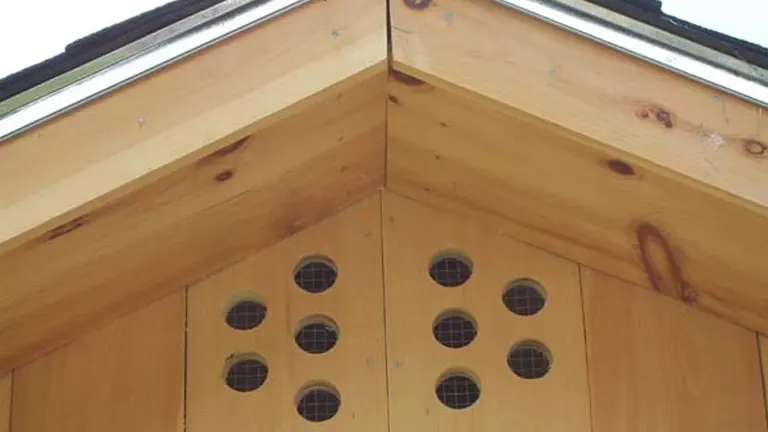
Ventilation is crucial, particularly in cold weather, to prevent moisture build-up which can lead to respiratory issues and frostbite. The best coop designs include high-placed vents that keep air circulating without creating drafts at the roosting level. It’s important to balance airflow with protection, ensuring the coop remains dry yet not drafty.
4. Access for Cleaning
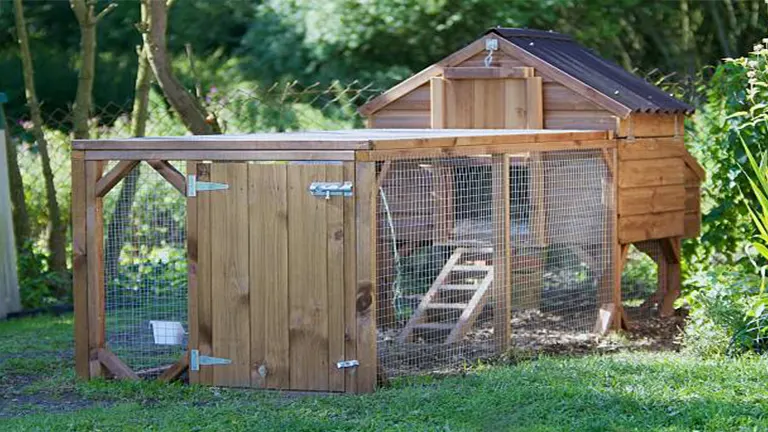
Design your coop with maintenance in mind. Ideally, include large doors or even a side that opens to facilitate easy cleaning. This is especially important if you use the deep litter method, which requires periodic thorough cleanouts. Easy access not only makes the job less strenuous but also more likely to be done regularly, contributing to a healthier environment for the chickens.
5. Food and Water Setup
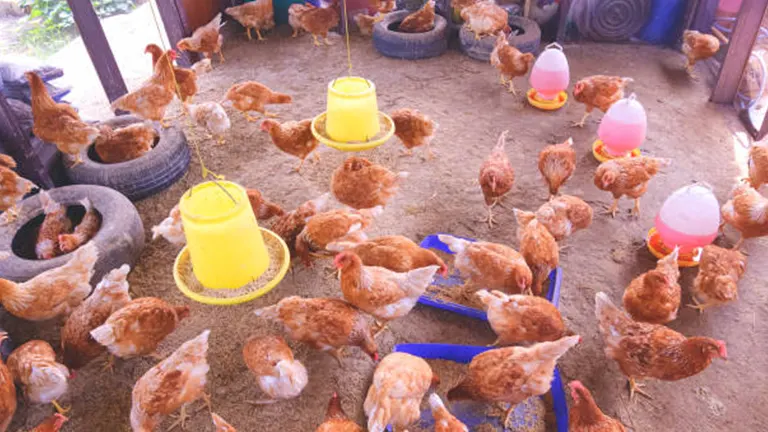
The placement of food and water—whether inside the coop or in the run—is subject to debate. Each setup has its pros and cons, but it’s vital to ensure that wherever the food and water are located, the area remains clean and the containers are designed to minimize mess. PVC feeders are recommended for their cleanliness and ease of use.
6. Efficient In-and-Out Access
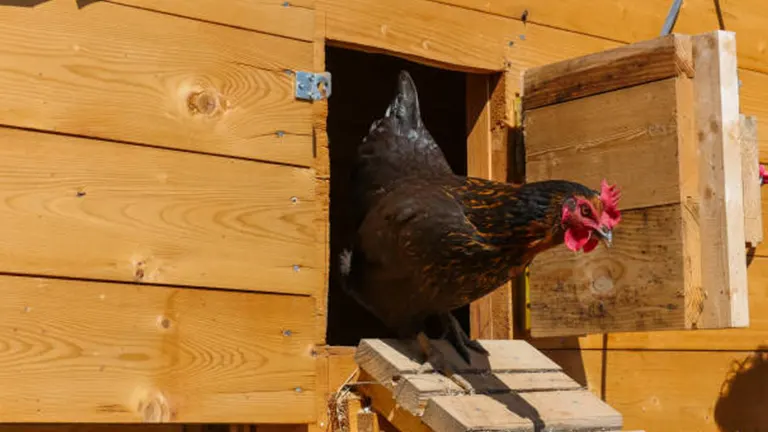
Chickens need a way to move freely between their coop and the run. Smaller, chicken-sized doors are typical, and investing in an automatic door can significantly enhance security and convenience by ensuring the chickens are safely enclosed at night and free to roam in the morning.
7. Consideration of Elevation
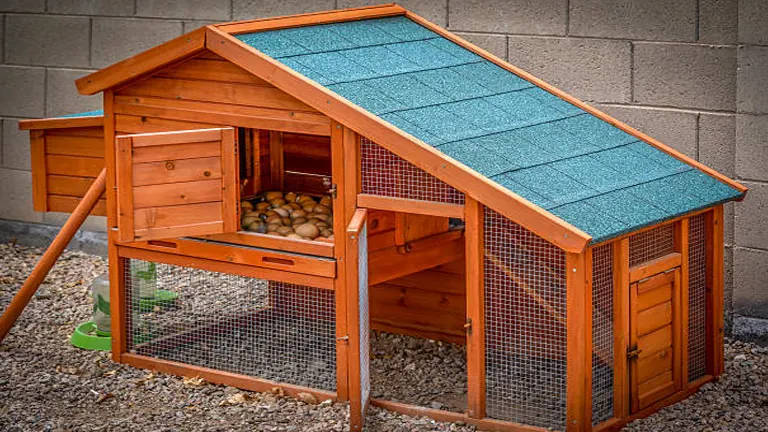
Elevations in coop design can vary. Ground-level designs can be practical, especially when combined with mobile setups like chicken tractors, which are moved regularly. Elevated coops are popular for added protection and cleanliness, though they can make access to cleaning more challenging. Walk-in coops, while more material-intensive, offer ease of maintenance and superior access.
8. Nesting Boxes
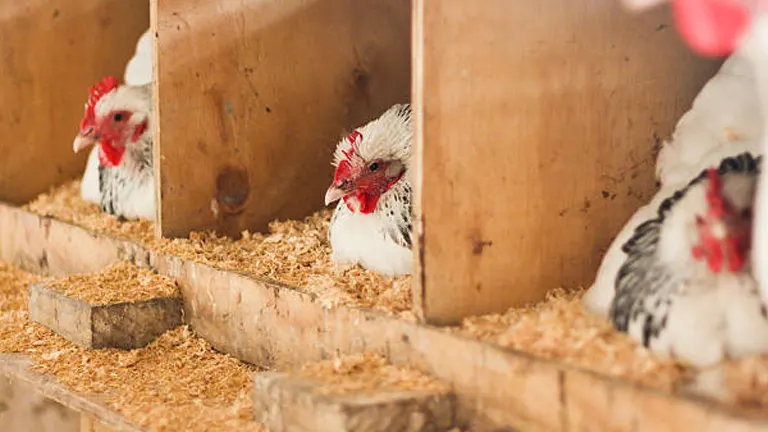
While you don’t need a nest box for every hen, having several boxes is crucial to prevent conflict. Nest boxes should be designed to be inviting and comfortable for the hens, and considerations for easy egg collection and cleaning are essential. New designs like rollout nest boxes can prevent egg breakage and keep eggs clean.
Seasonal Care Tips for Your Chicken Coop
Adapting your chicken coop to the changing seasons is crucial to keep your chickens healthy and comfortable throughout the year. Here are some essential tips on how to modify your coop in response to different weather conditions:
1. Winter Preparation
- Insulation: Add insulation to the walls of the coop to help keep the interior warm. Materials like foam boards or fiberglass batts can be effective, but ensure they are covered to prevent chickens from pecking at them.
- Draft Prevention: Seal any cracks or gaps where drafts might enter, but be careful not to compromise ventilation. Proper air circulation is crucial to prevent moisture buildup and respiratory issues.
- Heating: In extremely cold climates, consider using a safe heat source like a panel heater designed for coops or a heat lamp strategically placed where it can’t be reached by the chickens. Always prioritize fire safety.
- Water: Use heated water dishes to prevent freezing and ensure a constant supply of fresh water.
2. Summer Adaptations
- Ventilation: Ensure your coop has adequate ventilation to allow hot air to escape and cooler air to enter. Additional vents or opening windows can help, especially if they are positioned on opposite sides for cross-ventilation.
- Shade: Provide external shade over the coop and run using shade cloth, awnings, or by positioning the coop under trees. This helps keep the environment cooler during hot days.
- Cooling: Consider adding a small, battery-operated fan to help circulate air on extremely hot days. Ensure that water sources remain cool and filled; adding ice blocks can help keep water temperatures down.
- Dust Bathing Areas: Maintain or add areas for dust bathing in the shade, as it helps chickens regulate their body temperature and keeps parasites at bay.
3. Spring and Fall Maintenance
- Cleaning: Use these transitional seasons to thoroughly clean and inspect the coop. Remove and replace all bedding, scrub surfaces, and check for any signs of wear or damage that may need repairing.
- Pest Control: Spring and fall are ideal times to reinforce measures against pests such as mites, lice, and rodents. Clean out old nesting materials and treat the coop with pet-safe pest control products.
- Prepare for Rain: In areas with wet springs or falls, ensure that your coop doesn’t allow water to accumulate. Improve drainage around the coop, and check the roof and seals for leaks.
Year-Round Considerations
- Regular Inspections: Regularly check the structural integrity of the coop, no matter the season. Look for potential weaknesses or damages that could be exploited by predators or worsened by bad weather.
- Ventilation: Always maintain good ventilation. Adjust the amount of airflow according to the temperature, ensuring that it’s sufficient to keep the air fresh without causing drafts on the roosting areas.
Conclusion
Designing or selecting the ideal chicken coop is an integral part of ensuring the well-being of your chickens. Each of the eight features we’ve discussed plays a crucial role in creating a safe, comfortable, and efficient environment for your flock. By meticulously considering each aspect, from predator protection to proper ventilation, you not only safeguard your chickens’ health but also enhance your effectiveness as a chicken keeper. Remember, a well-planned chicken coop is the foundation of a healthy and happy poultry experience.
FAQs
- What size should my chicken coop be?
The size of your coop depends on the number of chickens you plan to keep. Generally, each chicken needs about 3-4 square feet inside the coop and 8-10 square feet in the run. However, bigger is often better to ensure your chickens have enough space to roam, which can reduce stress and prevent behavioral issues. - Is it necessary to have a covered run?
A covered run isn’t mandatory but highly recommended. It protects chickens from predators and harsh weather conditions like direct sunlight, rain, or snow, providing a safe and comfortable environment. - What materials are best for building a chicken coop?
Durable materials that can withstand the elements and deter predators are ideal. Treated wood for framing, hardware cloth for ventilation and predator protection, and a sturdy roofing material are essential choices. Avoid using materials like chicken wire, as they don’t provide sufficient protection from predators. - How do I ensure the coop has adequate ventilation?
Install vents or small windows near the top of the coop to allow for air circulation without creating drafts. Positioning these higher up ensures that fresh air circulates without chilling chickens directly. - How often should I clean the chicken coop?
Regular cleaning is crucial to prevent disease and keep the coop hygienic. Perform a basic clean weekly to remove droppings and refresh the bedding. A thorough clean, including scrubbing the coop and changing all bedding, should be done every six months or as needed. - Can I place the food and water inside the coop?
Yes, you can place food and water inside the coop, especially to protect it from wild animals and extreme weather conditions. However, ensure that the area remains clean as spilled feed can attract pests. - What is the best way to protect my coop from predators?
Beyond using sturdy materials like hardware cloth, ensure the coop is elevated from the ground and all entry points are secured with predator-proof latches. Regular checks for vulnerabilities in the coop’s structure can also prevent predator attacks. - What type of flooring is best for a chicken coop?
Easy-to-clean and non-porous materials like concrete or packed dirt covered with straw or wood shavings are ideal. These materials prevent pests and are easy to maintain. - How do I winterize my chicken coop?
Winterizing involves ensuring the coop is insulated but still ventilated. Add extra bedding, seal any cracks or gaps to prevent drafts (while maintaining ventilation), and consider a heat source if temperatures fall below freezing for extended periods. - Should the nesting boxes be elevated?
Nesting boxes should be elevated off the ground but lower than the highest roosting bars to discourage chickens from roosting in them. This setup helps keep the nesting boxes clean, as chickens prefer to roost in the highest part of the coop.
We hope this guide helps you create the perfect haven for your chickens! Got more questions or tips about chicken coop design? Drop a comment below—we’d love to hear your thoughts and experiences. Sharing is caring, so if you found this article helpful, please share it with fellow chicken enthusiasts! Happy building and happy keeping!

Edward Smith
Forestry AuthorWoodworking is about more than crafting; it's a harmonious connection with nature, mastering tools, and preserving our environment. I'm here to share my knowledge and experiences with you, forging a future where we can embrace wood's beauty and utility while safeguarding our forests' health and diversity.













Leave your comment